This post was contributed by Cyn Meyer at Podia.
You’ve been hacking away at prepping your sales funnel, and your landing page looks great.You’ve got your online products all ready to go and all the pieces of your business are in place.The only problem? Your sales numbers are less than ideal.If your sales record is not yet something to write home about, we’ve got just the solution for you:Give your copy a refresh.We’ve learned from the experts and have 4 copywriting tips for you today that’ll make a big difference in your sales.4 copywriting tips to increase your sales
Let’s start with one that takes place long before you write a single word:
1. Segment your audience as much as possible
Before giving any of your copy a rewrite, be sure to segment your audience. This is a foundational step you can take simply by organizing your contacts into smaller groups based on a variety of filters like customer traits, actions, and behaviors.Why is this important?One word: personalization.Segmenting allows you to tailor your messages, so you’re speaking more directly to your audience members (more on this in our next tip).And it works, too. Segmented email campaigns bring in 14.31% more opens and 100.95% more clicks than campaigns that don’t segment:
On top of that, they can score a 760% increase in revenue.To segment your audience, try organizing them into groups based on these 4 pillars of segmentation:
- Geographics: In addition to location info like city and country, you can also segment by language, climate, and population
- Demographics: Break down your audience by age, gender, income level, and occupation
- Psychographics: Use lifestyle, interests, personality, concerns, values, and attitudes to separate your prospective customer lists
- Behavioral: Segment by actions your subscribers and visitors take, which help you determine categories like intent, purchase usage, benefits sought, and buyer stage
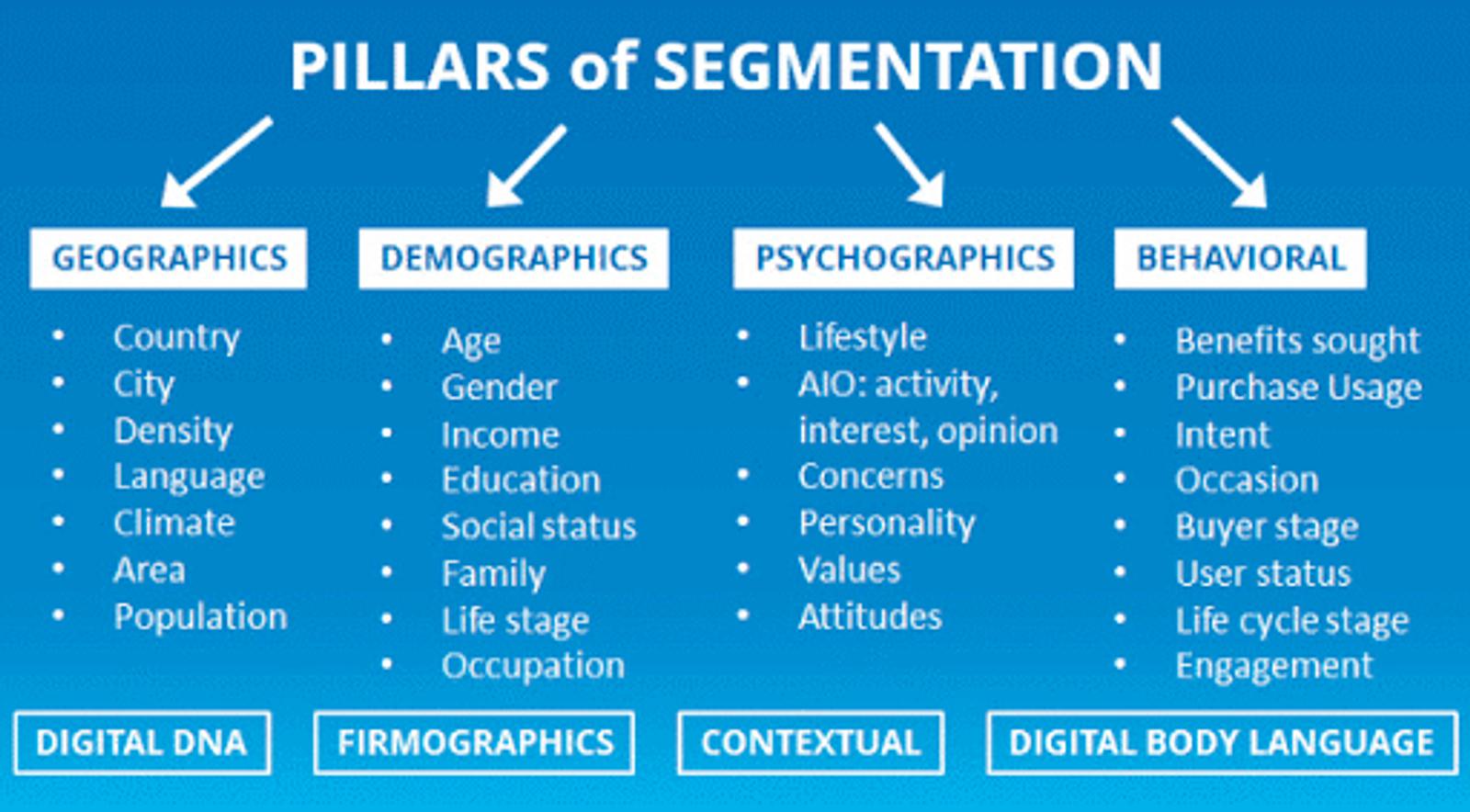
When it comes to behavioral segments, you can get pretty nitty-gritty with your sales and near-sales data.And that’s a good thing, because the more granular your groups are, the better. That’s what Optimove discovered when their average customer order value went from $28 to $42 after segmenting their audience into behavioral-based groups.

Once you have your segmented lists ready to go, you can leverage them by tailoring your email marketing messages to each group, which is our next tip today.
2. Personalize your message
Another copywriting tactic is to personalize your message as much as possible. Personalizing your email messages is the most effective sales email tactic and used by 50% of marketing influencers.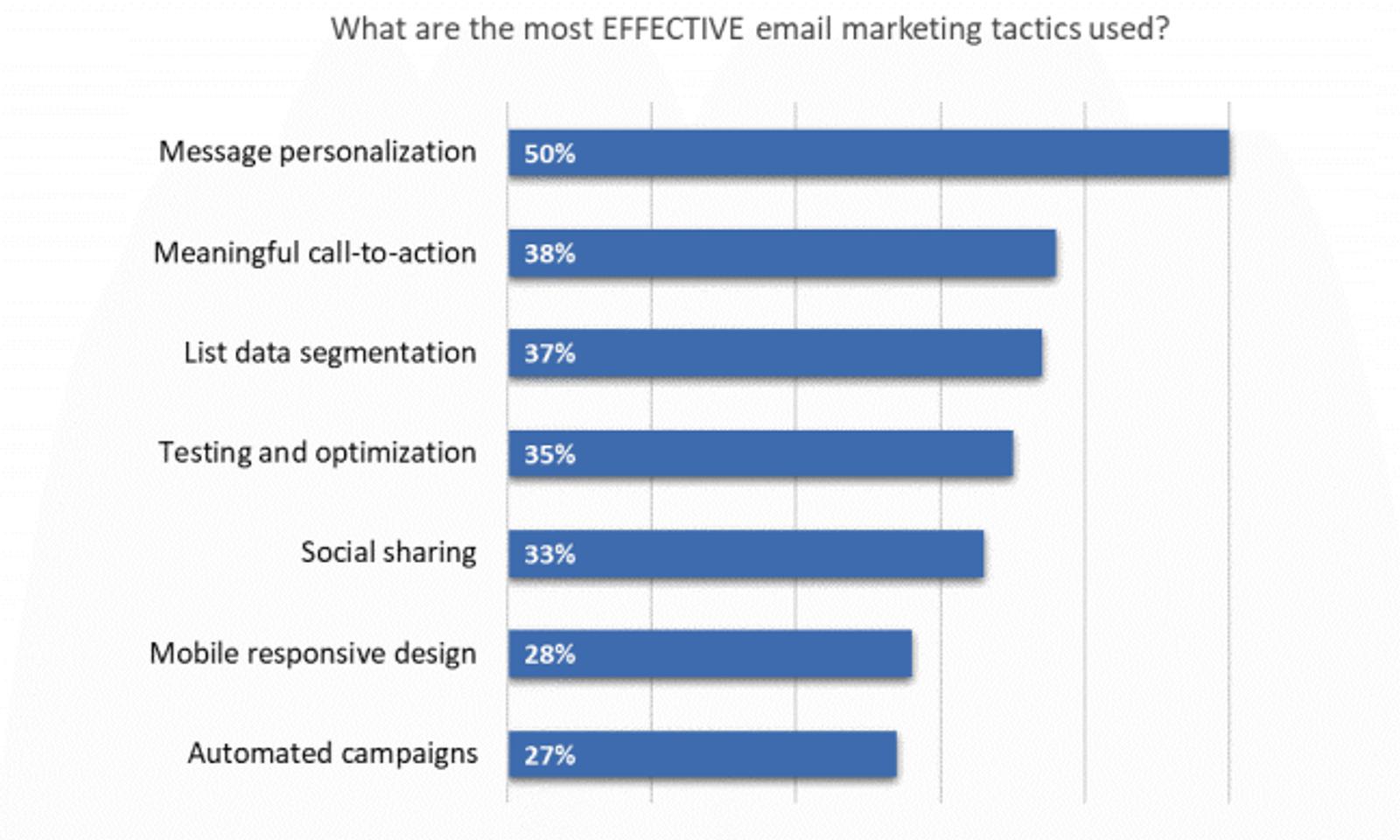
More specifically, it increases your open rate and click-through rate:
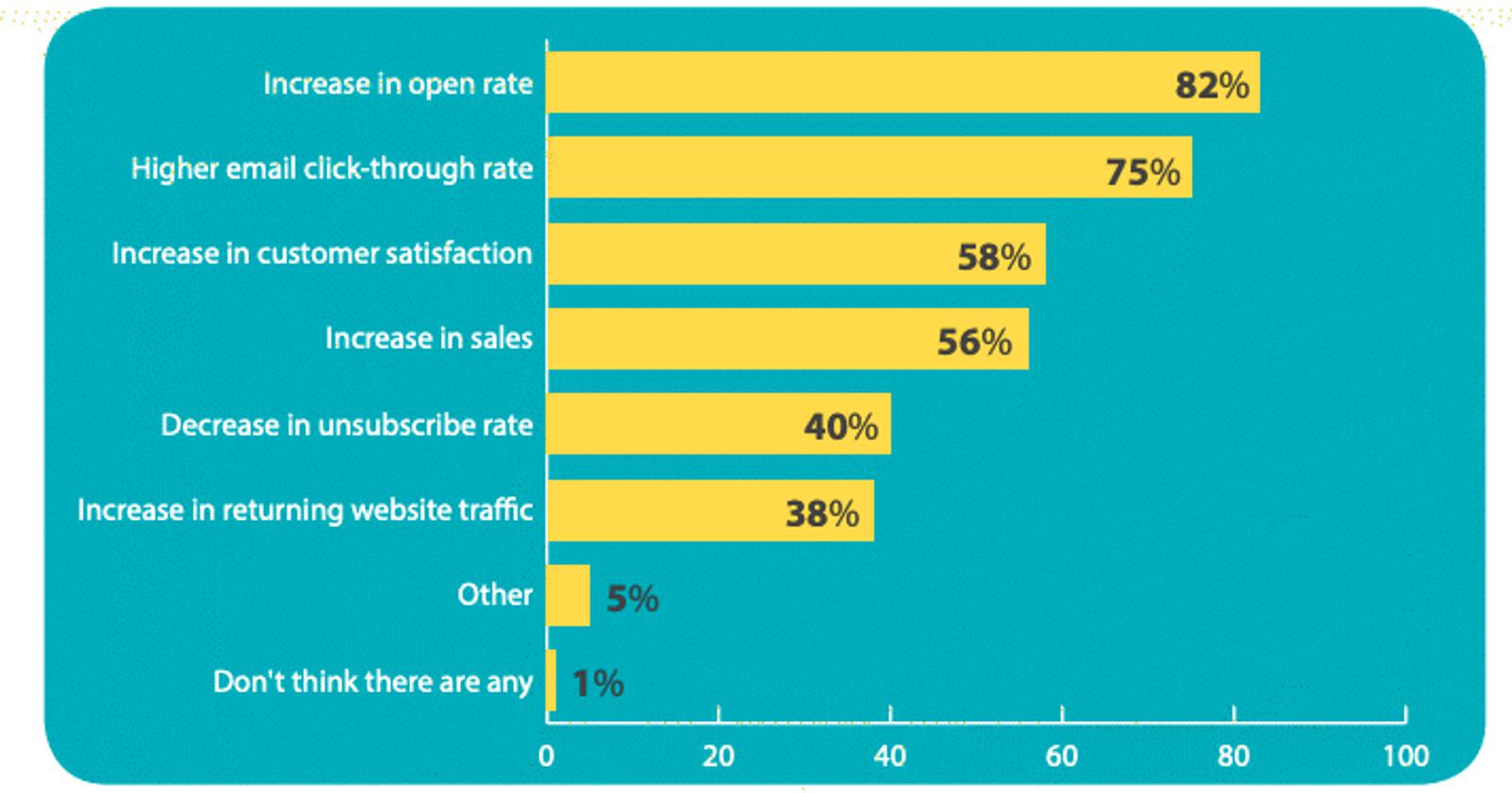
To personalize your message, try using specific details from your recipient’s life. The simplest way to start is to include your recipient’s name in your copy, like in this email I received from Marie Forleo with my name in the subject line:

You can take it a step further and include personalized graphics, such as in this email I received after registering for a webinar with Dean Graziosi:
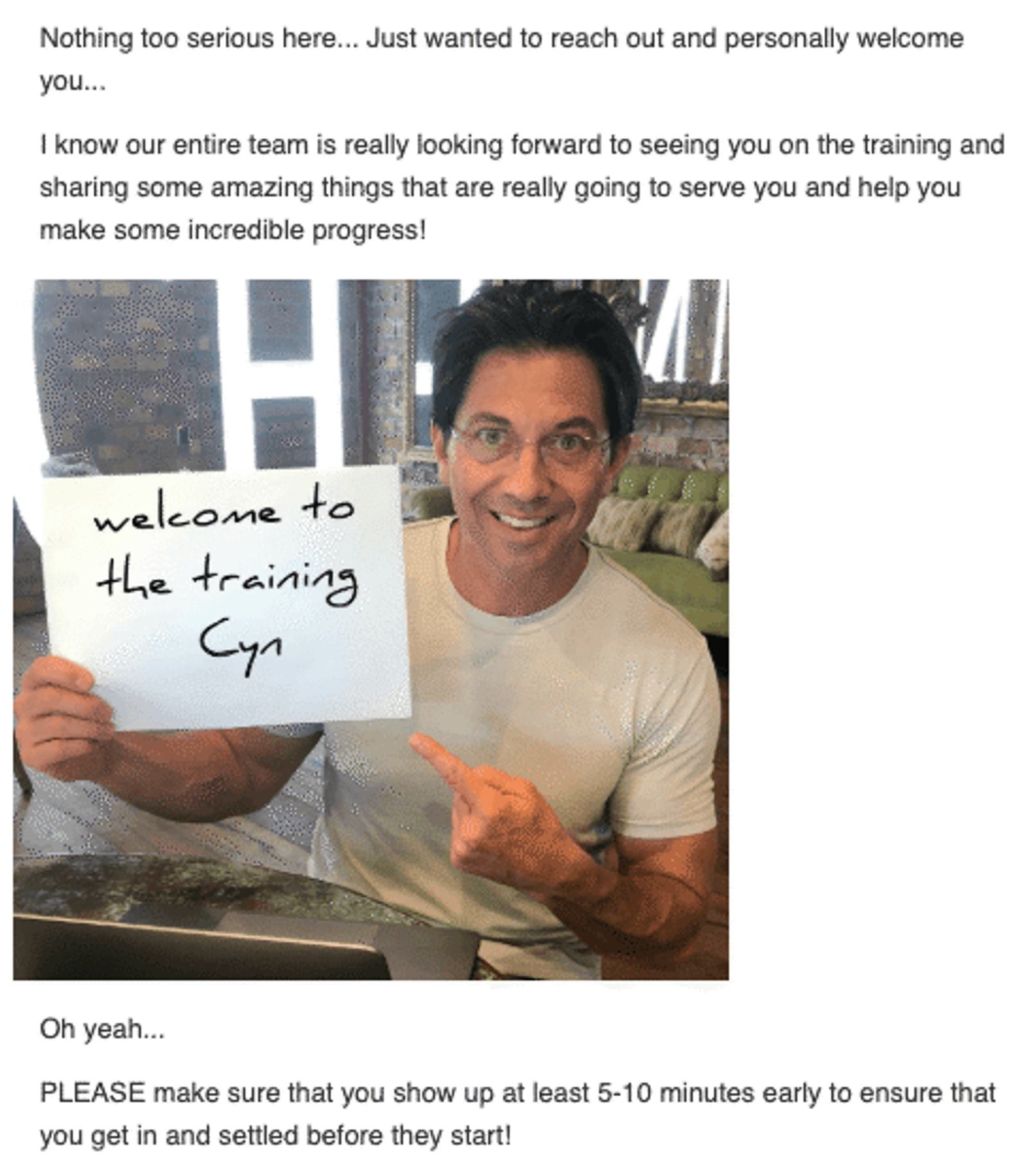
Or you can use relevant dates, like birthdays, as a way to personalize your message.Hawaiian Airlines nails this tactic in a personalized birthday email where they offer you a birthday gift of 500 airline miles if you book a flight within the year:

Alternatively, if you want to take the behavioral-segment route, check out how Airbnb writes their copy to accommodate your upcoming travel plans:
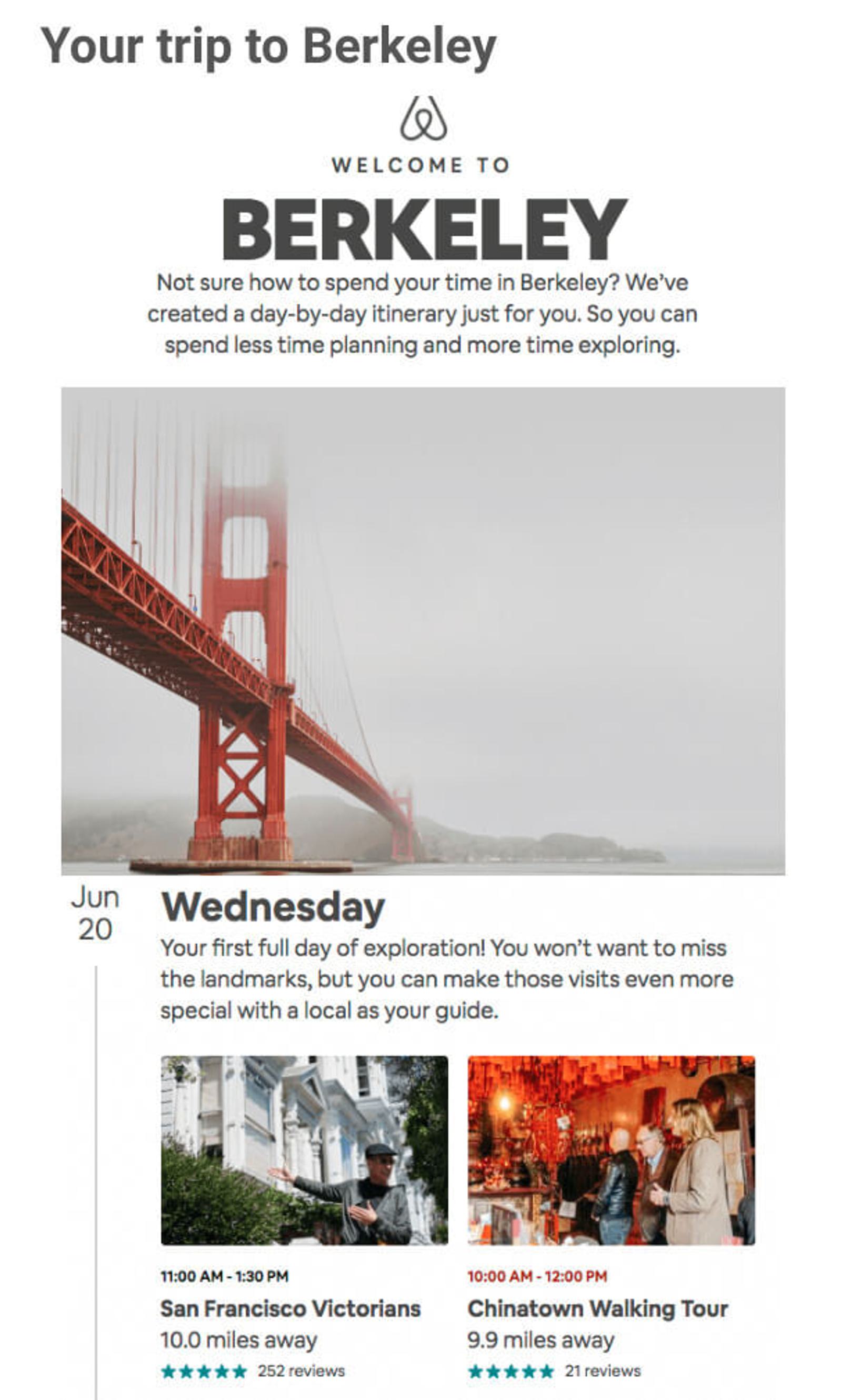
Timed perfectly to your travel itinerary, it doesn’t get more personal and relevant than that.As you can see, the sky's the limit here. Naturally, the more personal the message, the more effective it is.On the other end of the spectrum, if you don’t use personalization, it could cost you a pretty penny — organizations have been known to lose $2.5 trillion without it.The main takeaway here is to ensure your copy directly relates to your audience’s life and what they’re going through based on their segments.Our next tip gives you more specifics on how to address what your audience is going through.
3. Use the stages of awareness
Another effective way to write copy that sells is to use the five stages of awareness and speak to the particular stage your audience is experiencing.The five stages are:- Really unaware
- Problem-aware
- Solution-aware
- Product-aware
- Most aware

How do you determine which awareness stage your audience is in?Check out your traffic stats and analyze your visitor’s behaviors. This can be as straightforward as addressing people who’ve landed on a specific landing page or clicked on a certain email link.For instance, if someone’s been on your email list for a while and they’ve read several of your blog articles and watched one of your webinars, they’re likely to be in the fourth or fifth awareness stage by the time they hit your sales page.Then, once you figure out your audience’s awareness stage (and segment the audience, of course), use your copy to move people from a lower stage of awareness to a higher one. You can do so by directly addressing their pain points in that stage and then telling them how your product is the best way to solve them.A powerful way to tap into your audience’s pain point is to paint a very detailed picture of their worst moment related to the problem you’re trying to solve. Copywriting queen Joanna Wiebe calls this writing about the “moment of highest tension,” where your description is so emotional and vivid you can actually feel your audience’s pain.From there, all you need to do is resolve your audience’s agitated problem and tell them how you can solve it. And not just how you can solve it, but how they’ll feel once you do.More specifically, write about your audience’s satisfaction, which Joanna calls the “moment of highest pleasure.”Emotions and feelings, far more than statistics, are the key to effective writing for sales.Why? Emotional content performs nearly twice as well as rational content:
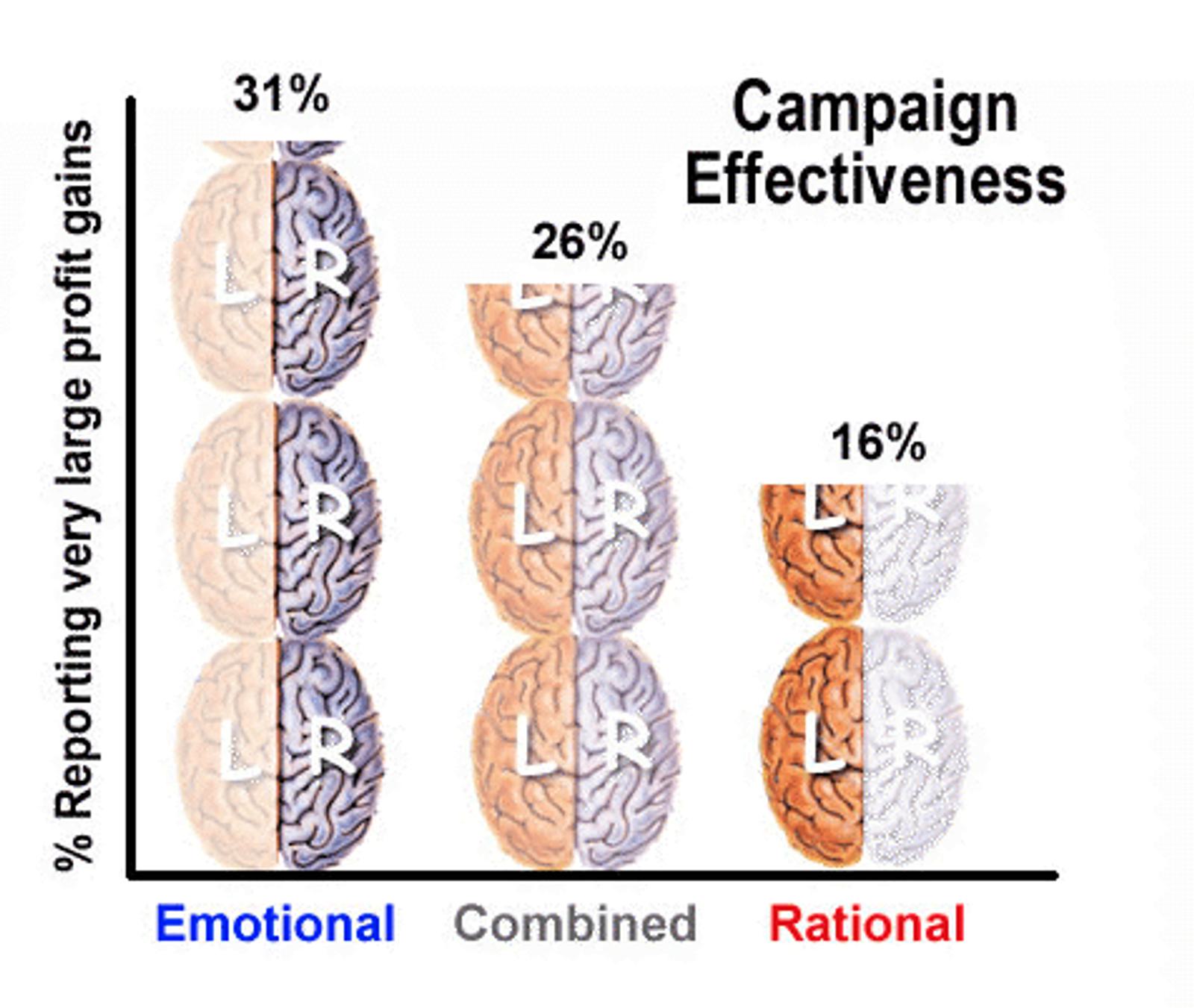
The moral is: Use as much emotion and painstaking detail as you can while addressing your audience’s awareness stage in your copy.
If you do, your copy will resonate, and your sales conversions will resonate right alongside them.Our final tip for you today also involves stages: Marketing funnel stages.4. Start at the bottom of the funnel
If you’re unsure of where to refresh your copy first, prioritize the bottom of the funnel, where transactions take place.The reason you should focus first on refining the copy closest to the point of conversion is that it’s the quickest way to pull in more customers.If visitors have found their way to your sales transaction page after browsing your blog, which is usually how it goes, it only makes sense to start your tweaks on that page. After all, why would they go back to the first page they landed on?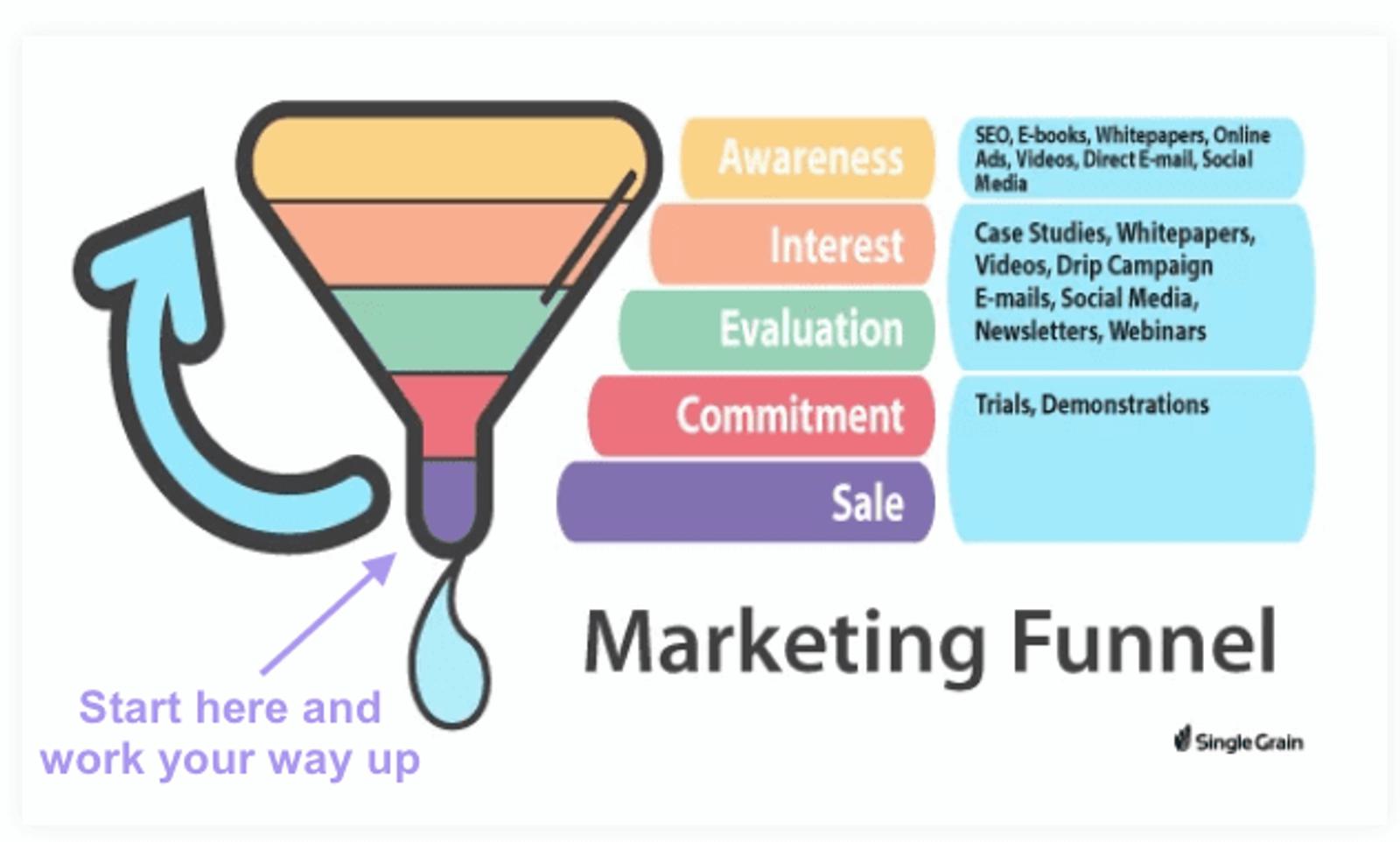
Remember to apply our previous copywriting tips here, too, where you:
- Address your audience’s specific awareness stage and
- Write copy that touches on their emotions and feelings
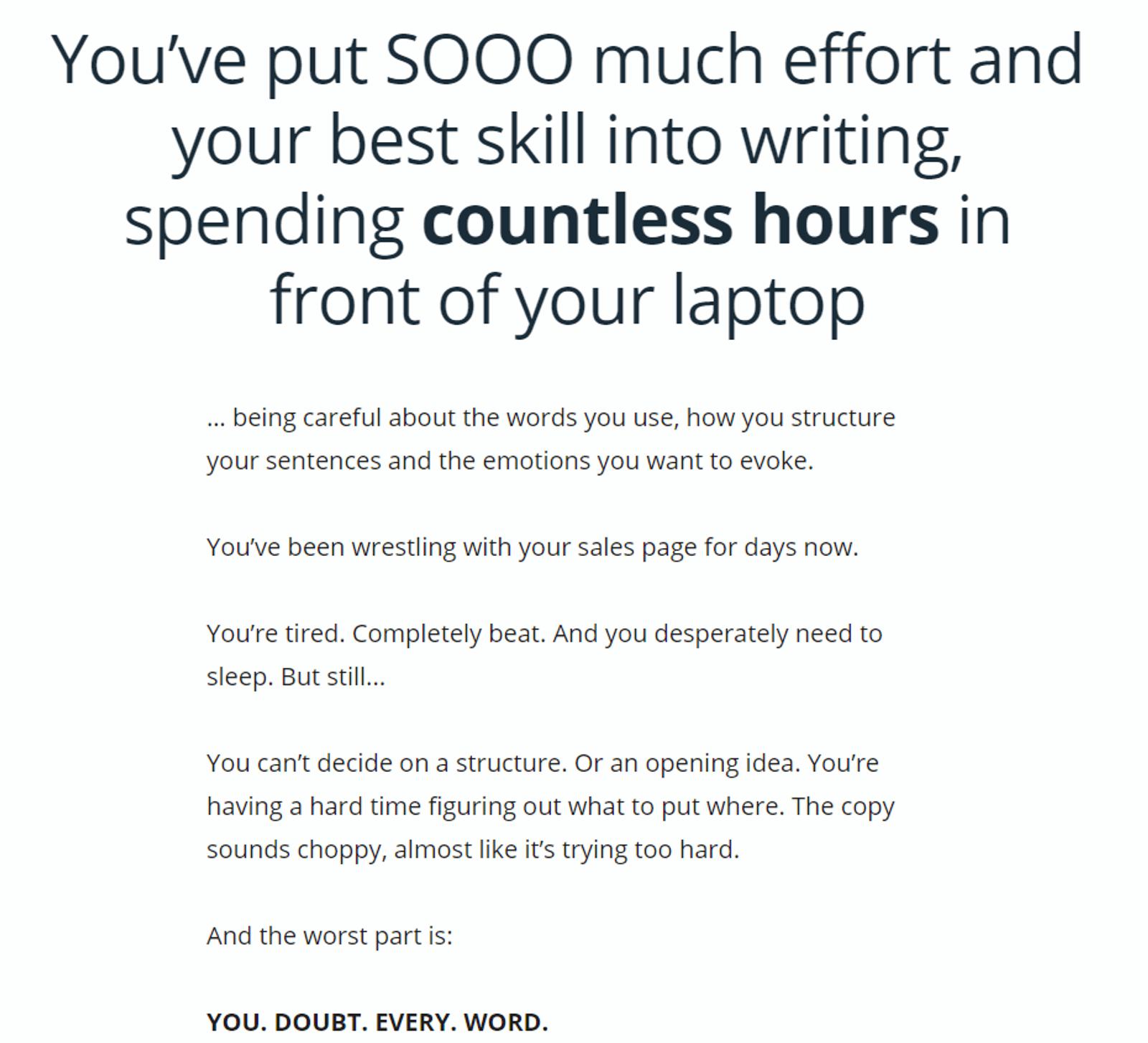
Pretty vivid, right? The copy continues to describe their audience’s sense of urgency and emotional state throughout the remainder of the page.And if there’s ever an example you want to follow, it’s that one.In sum: If a visitor interacts with content marketing that’s further up the funnel, write your copy so that it identifies the pain points in that particular awareness stage — just do it last.It is, after all, the furthest from the sale. If you want to see the most gains as quickly as you can, start at the bottom of the funnel, then tweak, tweak, and tweak again as you work your way up to the top.
Conclusion: The 4 must-dos for copywriting that sells
While there’s no shortage of copywriting tips and tricks out there, some of them are like Ugg boots: They go in and out of fashion.The 4 we covered today, on the other hand, don’t:
- First things first: Lay a solid foundation for your copywriting by first segmenting your audience into groups based on geographic, demographic, psychographic, and behavioral info.
- Once you have granular segments set up, personalize your messaging and speak directly to your audience’s problems and pain points.
- By addressing your audience’s awareness stage and painting a vivid picture of their emotional state, you can personalize your message even more.
- To prioritize your copywriting efforts, start with the copy that’s closest to the bottom of the marketing funnel, where sales transactions take place, and then work your way toward the top.








